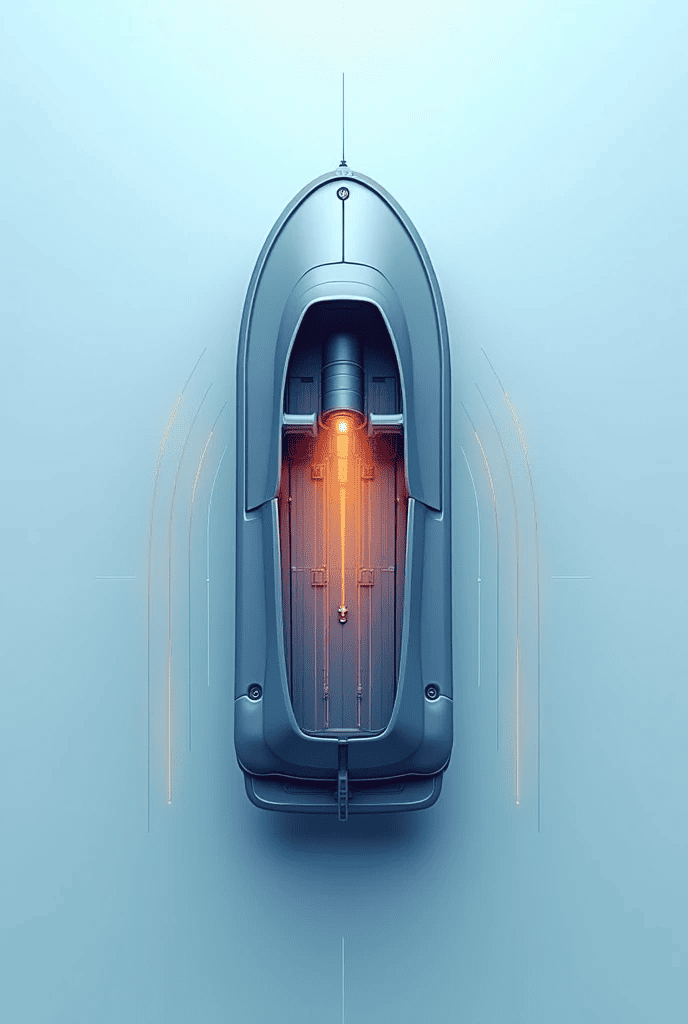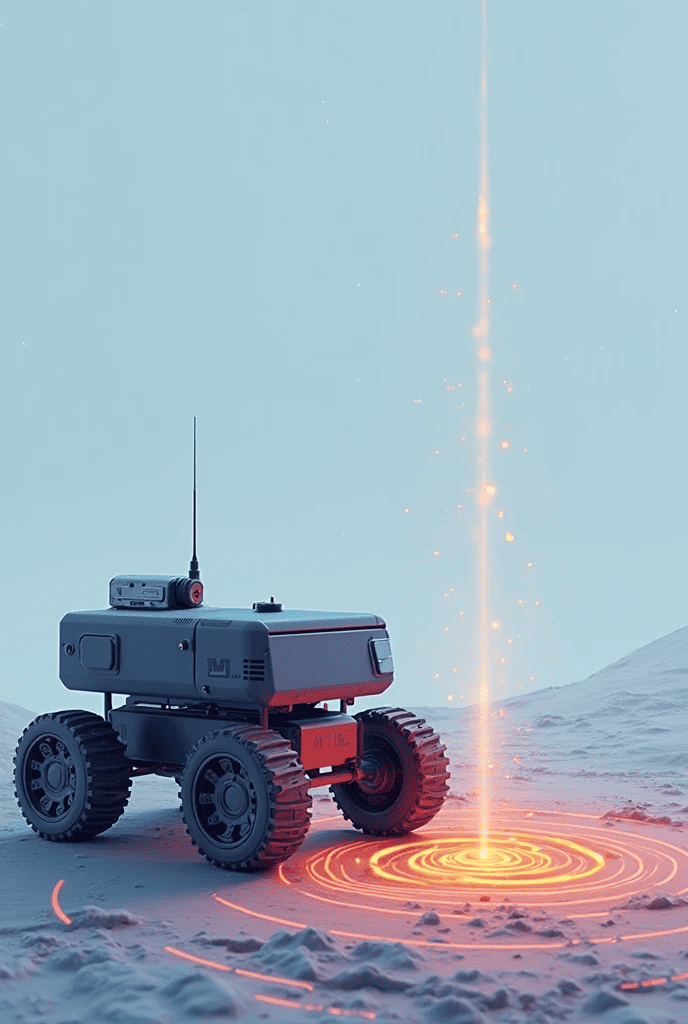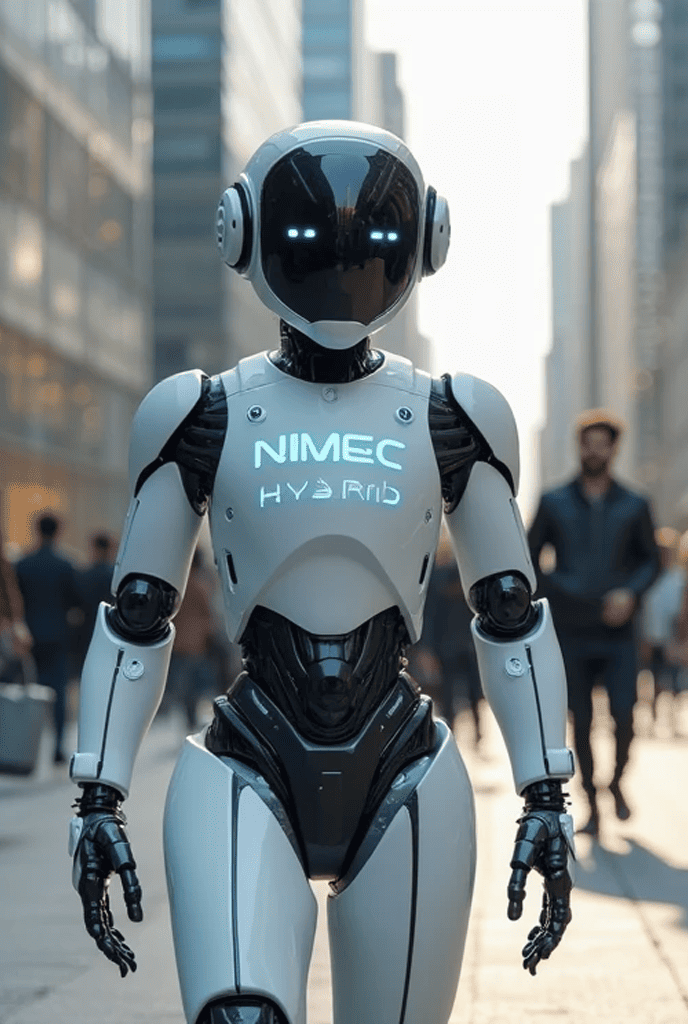Notice
Transition is currently unavailable. Maintenance in progress.


Magnetically Driven Systems for Next-Gen UAVs.
Autonomous propulsion for maritime platforms—both surface and
submersible—requires power systems that are compact, silent, and independent of
refuelling. NIMEC’s magnetic linear and rotary drive modules are specifically
engineered to meet these demands, enabling a new era in marine drone
capabilities.
Rotary magnetic modules provide stable, high-efficiency power for propellers
across a wide speed range, while linear magnetic drives can be configured as
high-speed waterjet systems. In these, thrust is generated by accelerating water
directly through magnetic field interaction, ensuring rapid response and
exceptional maneuverability with no exposed mechanical components. This is
crucial for operations in confined or hostile environments, including offshore
reconnaissance, environmental monitoring, and coastal defense.
NIMEC systems operate without combustion engines, eliminating exhaust,
vibration, and noise. This allows for low-signature deployment, undetectable by
thermal, acoustic, or visual sensors. With no fuel tanks or heat generation,
marine drones can operate safely near wildlife, within protected waters, and at
depth—free from traditional system constraints.
The modular design of the NIMEC solution enables seamless integration across a
wide range of hull forms and mission profiles, from compact survey vessels to
full-scale autonomous underwater platforms. Built-in magnetic energy generation
ensures each drone is self-sufficient, with mission duration limited only by
task requirements—not by fuel supply.
From an economic perspective, NIMEC offers a clear advantage. It eliminates fuel
costs, storage, and delivery logistics, as well as maintenance burdens
associated with combustion engines and transmission systems. There is no need
for auxiliary power sources, and the long service life of magnetic modules
ensures reliable performance with minimal upkeep—even under harsh marine
conditions. This makes the operation of maritime drones more predictable,
cost-effective, and sustainable for both civilian and defence applications.


Next-generation unmanned ground platforms demand high autonomy, silent
operation, and complete energy independence. NIMEC’s magnetic drive solutions
deliver exactly that — a reliable, economical, and modular architecture. At the
core are power modules that can be seamlessly integrated into both wheeled and
tracked vehicles, enabling propulsion via electric or hydraulic motors without
the need for internal combustion engines.
The system’s energy efficiency enables not only long-range autonomous mobility,
but also supports high-energy weapons such as laser systems. These allow for
completely silent and flashless firing, with no flammable components and an
almost zero thermal signature — providing a decisive tactical advantage in
combat scenarios.
Each platform can be configured to meet mission-specific requirements. Designed
for rough terrain, swamps, or mine-infested zones where traditional mobility
fails, NIMEC-powered units can temporarily switch to low-altitude air-thrust
operation, hovering one to two metres above the ground. This capability enables
movement across complex or hazardous terrain without direct surface contact,
preserving mobility and survivability.
Maintenance and repair are simplified to the extreme: no gearbox, no internal
combustion engine, no fuel logistics. Damaged modules can be quickly replaced
in the field. The magnetic drive requires no refuelling, remains stable across
temperature extremes, and delivers continuous energy to both primary propulsion
and auxiliary systems.
Economically, these platforms are far more viable over their full lifecycle.
Eliminating fuel costs, reducing maintenance, and extending operational
longevity make the deployment of large-scale unmanned ground fleets not only
feasible but budget-stable. With NIMEC, true off-grid terrestrial mobility
becomes reality — without compromise.
Modern robotics demands increasing autonomy, flexibility, and biomechanical
accuracy. NIMEC magnetic modules are ideally suited to meet these challenges,
providing both linear and rotational motion with high precision and controllable
response. A robot can be equipped with a single power module functioning as a
“magnetic heart” or designed with a distributed system, where each limb, sensor
array, or structural element has its own dedicated drive.
One of the key advantages lies in the ability to create flexible linear systems
that mimic the function of muscle fibres, breathing mechanics, or peristaltic
motion. This enables a new class of biomimetic machines, medical assistants,
and cybernetic exoskeletons, where movement feels organic and reaction time is
immediate and adaptive.
NIMEC modules eliminate the need for centralised transmissions, generate minimal
heat, and operate in complete silence — an essential feature for service,
medical, and reconnaissance robotics. With onboard energy generation and
integrated ultracapacitor blocks, each component functions autonomously,
reducing system load and simplifying both upgrades and field maintenance.
This architecture enhances overall reliability, minimises failure points, and
makes repairs straightforward. Instead of complex diagnostics and full-system
disassembly, a single module can be replaced — a critical advantage in
restricted or operational environments.
The NIMEC magnetic platform redefines what's possible in the development of
mobile, humanoid, and industrial robotic systems, enabling robust and effective
performance across diverse use cases — from surgical precision to post-disaster
deployment.
